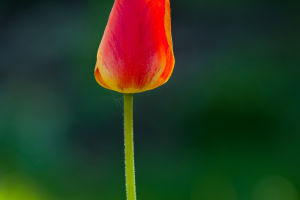Dandelions are a controversial plant. They often grow in meadows, fields, and even in the corners of cities, with their seeds floating everywhere with the breeze.
But are dandelions flowers or herbs? This question seems simple, but it is quite complicated because they exhibit characteristics of both, possessing the beauty of flowers and the tenacity of grass.
Botanical Classification
From a botanical point of view, the dandelion (Taraxacum officinale) is a perennial herb belonging to the Asteraceae family. They have typical herbaceous characteristics, such as stems, leaves, and roots, and their life cycle generally spans more than one year.
Their rhizomes are slender and can penetrate deep into the soil, allowing them to survive in various environments. At this level, dandelions are considered to be herbs.
Floral Characteristics
However, dandelions also have eye-catching flowers, composed of many tiny yellow petals forming beautiful flower heads.
These flower heads exhibit typical floral characteristics, such as petals and stamens, and attract insects to spread their pollen. Therefore, from this perspective, dandelions can also be regarded as flowers.
Adaptability and Resilience
Dandelions are extremely resilient plants with a high degree of adaptability, enabling them to survive and thrive in a variety of environments.
They grow quickly and possess strong reproductive abilities, which is one of the reasons why they are often considered grass. However, their beautiful flowers often lead people to overlook their herbaceous attributes.
Role in Human Culture
Dandelions also play an important role in human culture. Their seeds, blown by the wind to different places, symbolize the continuation of life and hope. This scene is often imbued with romantic meaning.
In some regions, dandelion flowers are used for food or medicine, with people believing in their nutritional and medicinal values.
Dandelions in Cuisine and Medicine
Dandelions have been used in various culinary traditions. The leaves can be used in salads, the roots can be roasted as a coffee substitute.
They contain high levels of vitamins A, C, and K, along with minerals such as iron and calcium. Medicinally, dandelions have been used for their diuretic properties, to aid digestion, and to detoxify the liver.
Ecological Importance
Dandelions are important not just to humans but also to the ecosystem. They are among the first flowers to bloom in spring, providing an early source of nectar and pollen for bees and other pollinators. Their deep taproots help to aerate the soil and bring up nutrients from deeper layers, benefiting other plants.
Conclusion
In conclusion, the debate over whether dandelions are flowers or herbs highlights their unique position in the plant kingdom. Regardless of their classification, dandelions play a vital role in nature and human culture, symbolizing hope, resilience, and the intricate balance of ecosystems.
Their dual identity invites us to look beyond simple labels and appreciate the complexity and richness of the natural world. Whether we see them as a weed, a wildflower, or a medicinal herb, dandelions remind us of the interconnectedness of life and the beauty that can be found in unexpected places.

